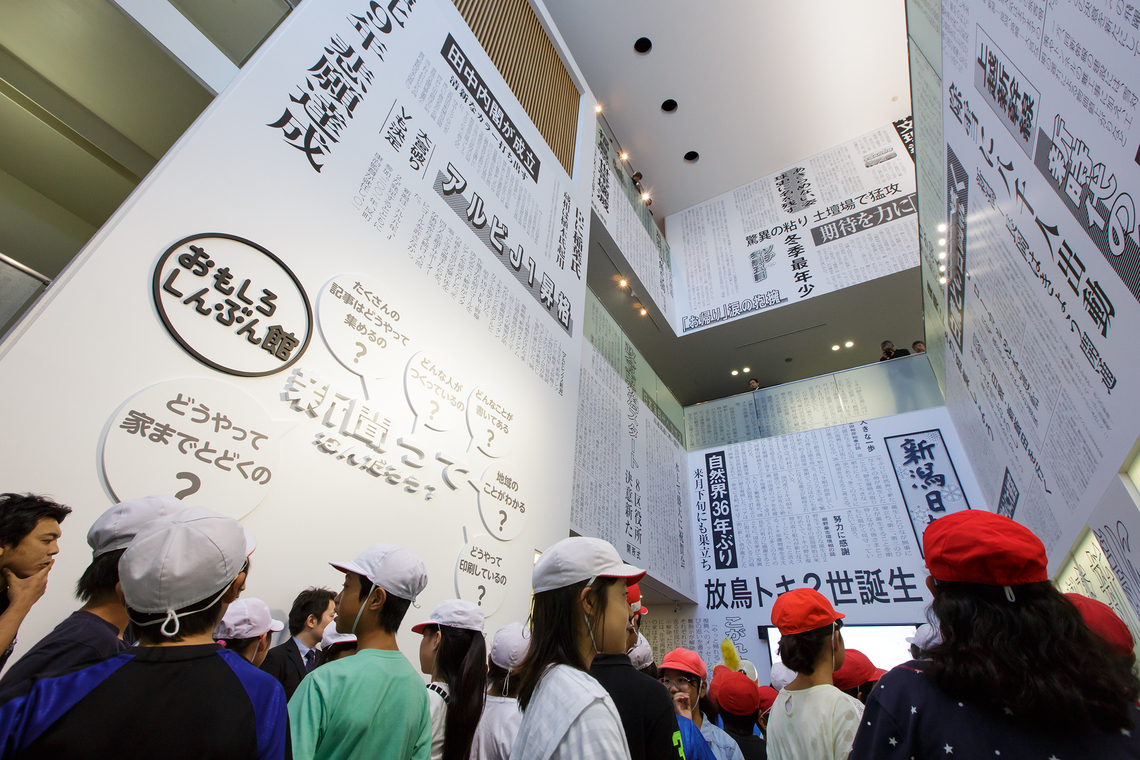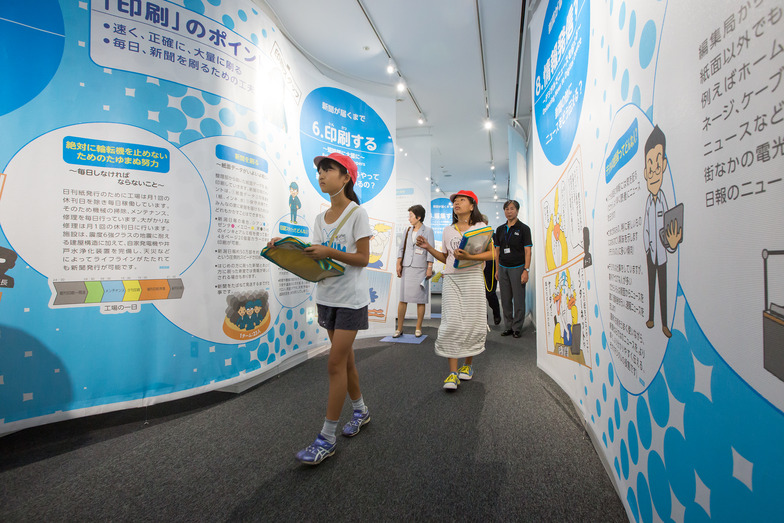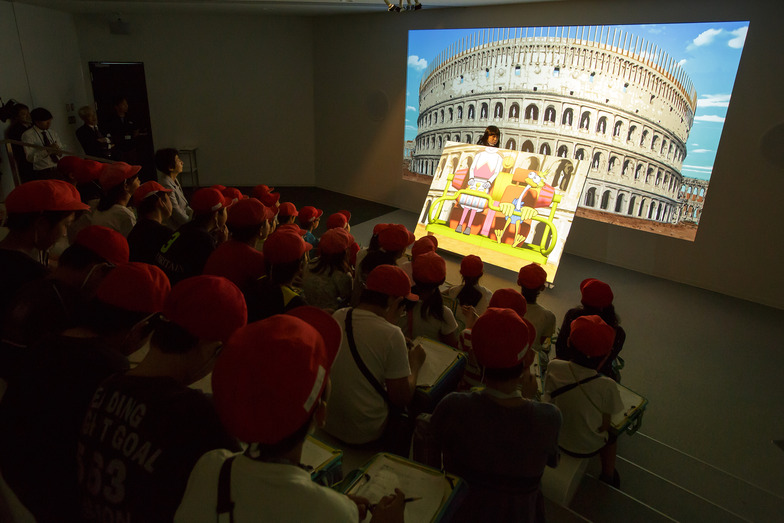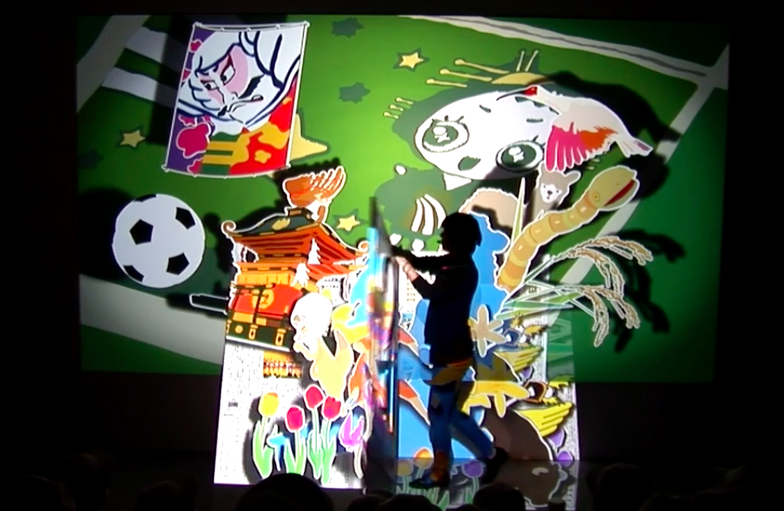Facing declining circulation amid the rise of digital media, the Niigata Nippo planned to create a hub for communicating "newspaper value," targeting elementary school students as "future readers."
The Fun Newspaper Museum was established within an existing newspaper printing plant. It complies with the Ministry of Education's curriculum guidelines and aims to actively create opportunities for children to become familiar with newspapers from an early age.
The facility features four floors, each themed after the four colors used in newspaper printing: Cyan, Yellow, Magenta, and Black. It also includes sections with trick art and projection mapping. Tours last about one hour. Visitors follow a single-path route designed to let them touch and experience various aspects of newspaper production.
What visitor feedback revealed
Visitor surveys and feedback from visiting school teachers reveal that "newspaper content has a very high affinity with educational settings."
The reason for its popularity is that the Shinbunkan allows visitors to experience the "efforts to communicate effectively" that newspaper companies repeat daily. Learning "how to structure clear writing" (properly covering the 5W1H) and "how to craft headlines" that catchy summarize the entire content in one sentence trains reading and writing skills and connects directly to Japanese language studies.
Furthermore, learning about the diverse activities and history of newspapers directly connects to understanding regional characteristics and history, linking to social studies learning. Content that is difficult to implement practically with children in regular school lessons can be entrusted to external institutions within the "integrated studies/social studies field trip" curriculum, contributing to the efficient advancement of lesson plans.
Moreover, with the implementation of voting rights at age 18 and major revisions to the National Center Test for University Admissions, educators on the front lines feel uneasy about upcoming societal changes in the education sector. Furthermore, educators nationwide are exploring teaching methods to help children develop the ability to "properly handle information, independently discern accurate information from inaccurate information, and think critically."
Therefore, as an activity uniquely possible for local newspapers—professionals in information handling and experts on their regions—elevating the "Fun Newspaper Museum" into a facility enabling active learning* is a viable approach. We sense a new potential for social contribution by local newspapers: further enriching the educational curriculum offered at the facility to enhance the media literacy of future readers.
*Active Learning
A general term for teaching and learning methods that incorporate active participation by learners, differing from one-way lecture-style education by teachers. It aims to cultivate generic skills encompassing cognitive, ethical, and social abilities, as well as knowledge, experience, and cultural literacy.
Insights from Multi-Faceted Evaluations
Furthermore, the "Fun Newspaper Museum" project received four awards. Notably, each award recognized it from a distinct perspective: the Kids Design Award evaluates products and projects for children; the Eibunren Award assesses the story, quality, and planning of the video; the Japan Sign Design Award commends the clear signage guidance within the space; and the Japan Space Design Award evaluates the exhibition space and its contribution to local community development.
This outcome stems from our consistent focus on "letting future readers experience the value of newspapers" throughout the exhibition space and video production.
The strength of the project team, including Dentsu Inc. Event & Space Design Bureau and production companies, lies in its ability to realize a unified total communication strategy—from spatial design and video production to operational and PR planning—all aligned toward a single, overarching objective.
We firmly believe that the ability to decipher the essence of challenges, establish a unified core approach, and solve projects with optimal methods, costs, and timelines—even those without clear endpoints—will increasingly become a required condition for clients seeking partners.
Next time, we'll discuss the process, outcomes, and challenges of opening the "Omoshiro Shinbunkan" with Mr. Hideaki Adachi, Director of the Niigata Nippo Newspaper Company.
※ "Omoshiro Shimbunkan" Awards
● 9th Kids Design Award: "Encouragement Award - Kids Design Council Chairman's Award"
(Comment): "An ambitious initiative by a regional newspaper to educate about the value and production process of newspapers through exhibits and experiences in the digital age. Education through newspapers fosters familiarity with print, develops reading comprehension, and should contribute to improving information literacy."
● Eibunren Award 2015 "Outstanding Planning Award"
The small theater video within the exhibition facility. Recognized for the artistic quality and child-friendly communication of the video show, which uses projection mapping to convey the fun of newspapers through live interaction between an anime character and a female MC.
●49th Japan Sign Design Awards "Selected Entry, Space & Environmental Expression Sign Category"
Recognition for the exhibition methodology that engages children through typography and flat graphics.
●DSA Japan Space Design Award 2015 "Selected in the Culture and Urban Development Space Category"
Recognition for the spatial design of an informational experience that allows visitors to step into the newspaper and encounter its new facets.




